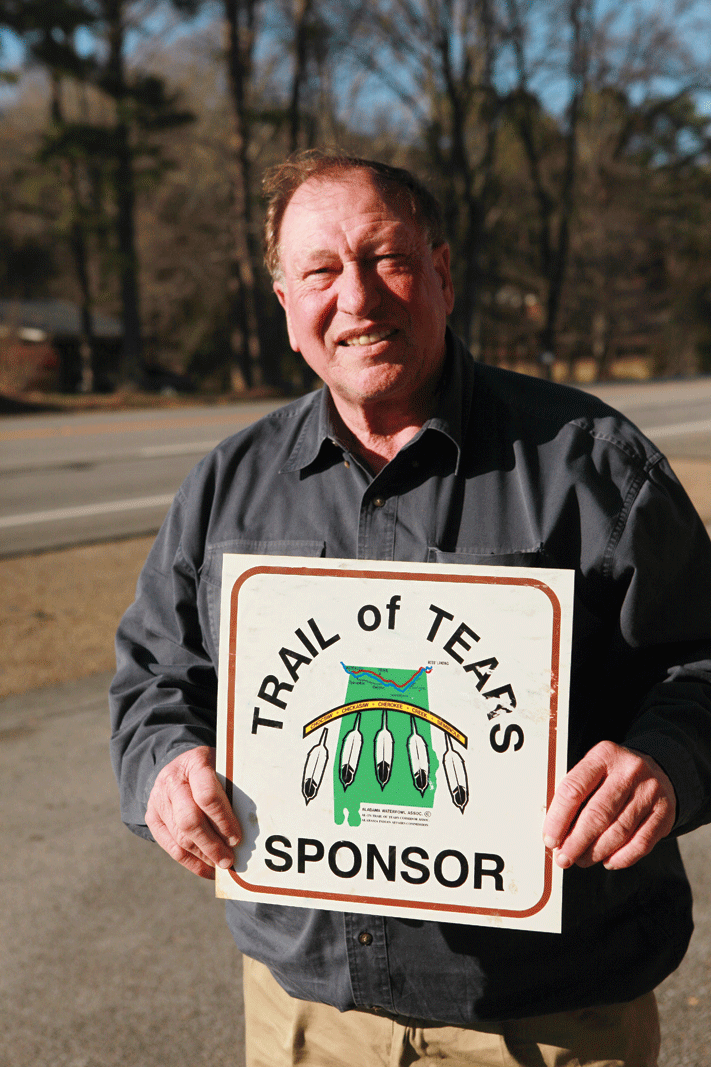From our co-ops: North Alabama Electric Cooperative

The discovery of some of his family’s ancestral records inspired Jerry Davis of Jackson County’s Aspel community to bring national attention to the plight of the Cherokee Indian nation during the 1830s.
The result was the annual Trail of Tears Commemorative Motorcycle Ride — a 230-mile trip across North Alabama commemorating the expulsion of thousands of Native Americans from their homes in the Southeast to a reservation west of the Mississippi River.
Davis says shortly after his mother died in 1992, he found some of her family records and learned that his great-grandmother, a full-blooded Cherokee, had been given by her parents to a white family to be raised in their home in the Paint Rock Valley. Nancy “Nano” Owens was eight years old when her parents decided to leave her behind with friends who had promised to care for her.
Discovering his great-grandmother’s “hidden heritage” inspired Davis to make the public more aware of the Native Americans’ plight. But it was during a discussion of the subject with his friend, Bill Cason of Whitwell, Tennessee, a fellow motorcyclist, that the idea of holding an annual Trail of Tears motorcycle ride came about.
Just before their first ride, Davis conducted a survey of the public’s familiarity with the Trail of Tears in North Alabama and found that only three out of 10 people knew anything about it. “I would venture to say that nine of 10 people know about it today,” he says.
Ike Moore, vice president of the Alabama-Tennessee Trail of Tears Corridor Association, says that although there has been a significant decline in riders over the last several years, “We expect about 30,000 participants to ride this year.”
The large number of participants in the annual event is representative of those Native Americans who, in 1838 and 1839, were forced at gunpoint by federal troops from their homes in and around the Tennessee Valley to a reservation in what is now Oklahoma.
Records show that about 5,000 of the 16,000 Native Americans died en route. Several others escaped and hid in the densely wooded mountains and hollows of Jackson County and other parts around the area.
According to the Tennessee Valley Regional Growth Coordination Plan, the Trail of Tears event is considered the largest motorcycle ride in the world. Davis says the event has attracted as many as 200,000 riders. Alabama Tourism Director Lee Sentell called it “the largest spectator event in the state.”
This year’s ride will be on Sept. 20. Riders will line up at 7 a.m. in downtown Bridgeport and start their journey across North Alabama at 8 a.m. They will stop for lunch in Huntsville at the Rocket Harley-Davidson dealership before continuing to their final destination at Waterloo.
Davis says he remains as excited about the Trail of Tears ride as he was when it was started 20 years ago and has no plans of stopping the annual event. “I’m hoping it will keep bringing people here to honor our ancestors,” he says. “We need to continue the education process and keep tourism alive and well in our state.”




